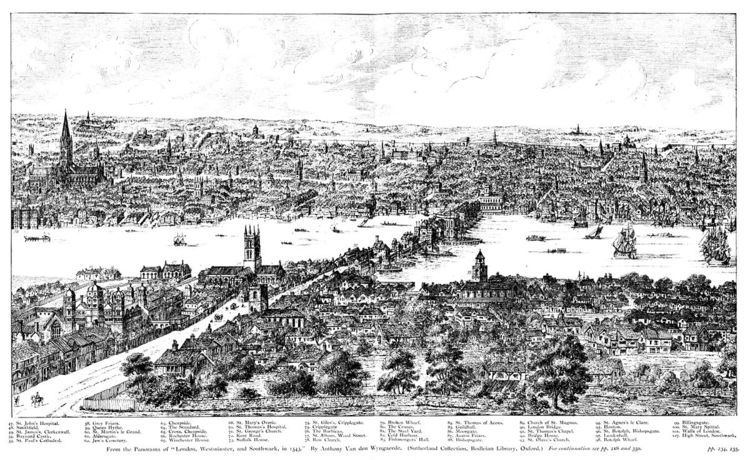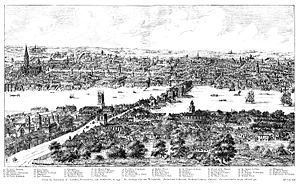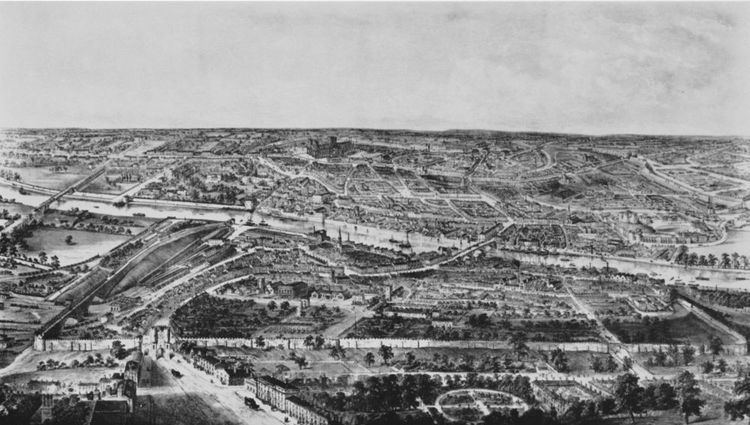Name Nathaniel Whittock | Died 1860 | |
 | ||
Books The decorative painters' and glaziers' guide | ||
Nathaniel Whittock (26 January 1791 – 12 August 1860) was a Victorian topographical engraver, who published bird's-eye views, e.g. of York (1856), Oxford (1834), Melbourne, Australia (1854), Hull (1855), and London (1845, 1849, 1859).
Contents

Life

He was born to John and Sarah Whittock in the City of Westminster and was baptised on 6 March 1791 at St John's, Smith Square. Little is known about him until 1824-1829 when he appears as "Teacher of Drawing and Perspective, and Lithographist to the University of Oxford", and worked for the university's Ashmolean Museum and scientific community. In 1830 and 1831 he was at 24 Garnault Place, Spa Fields, Islington, London and from 1848 to 1860 he worked at 34 Richard Street, Islington with his cousin Henry Hyde.
Works
Whittock was "a prolific writer of instruction books", on drawing and other subjects, such as The decorative painters' and glaziers' guide (1828), On the construction and decoration of the shop fronts of London (1840), and The complete book of trades, or the parents' guide and youths' instructor (1837). The full title of the first of these was:
The decorative painters' and glaziers' guide: containing the most approved methods of imitating oak, mahogany, maple, rose, cedar, coral, and every other kind of fancy wood, Verd Antique, Dove, Sienna, Porphry, white-veined and other marbles, in oil or distemper colour; designs for decorating apartments, in accordance with the various styles of architecture; with directions for stencilling, and process for destroying damp in walls; also a complete body of information on the art of staining and painting on glass; plans for the erection of apparatus for annealing it, and the method for joining figures together by leading, with examples from ancient windows.
As the full title shows, the work was very comprehensive, and the preface "rails against trade secrecy" which the book was intended to dispel. The work has been described as "influential" and "important" and is often cited by modern scholars of interior decoration.
